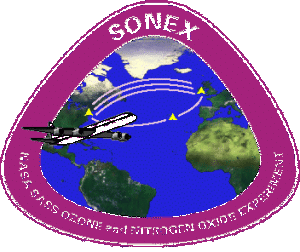The impact of subsonic aircraft emissions on tropospheric NOx and ozone budgets has been studied at a preliminary level with models that focus on upper tropospheric chemistry and are acknowledged to be limited with respect to treatment of transport and the tropospheric NOx budget [Brasseur et al, 1996]. The state of our understanding about subsonics and ozone as of early 1994 is summarized in Chapter 11 of the WMO/UNEP ( acronyms ) Scientific Assessment of Ozone Depletion [WMO, 1995]. A special international assessment on aircraft, sponsored by IPCC, will be completed in 1998.
Since the UNEP/WMO report, much modeling and a number of followup aircraft missions have been conducted. Much work directed toward subsonic NOx has been performed by groups in Europe, including the AERONOX, POLINAT, STREAM projects. In addition, a commercial airliner program called MOZAIC (kfa-juelic.de MOZAIC, www.aero.jussieu.fr ) sponsored by the European Union (EU) has collected ozone, water vapor and temperature data along major international routes of four European carriers. The recent AEREA Aircraft Effects Colloquium in Paris (15-18 October 1996) summarized many results from these activities, along with AEAP STRAT scientific accomplishments (AEREA Proceedings, 2 Vols., 1997). AERONOX, STREAM, and POLINAT papers have appeared in GRL, and JGR, among other publications.
There are two general areas of atmospheric impact from the emissions of subsonic aircraft:
- Nitrogen oxides (NOx), CO, and hydrocarbons from aircraft emissions, as well as not well-understood heterogeneous processes, may perturb upper tropospheric/lower stratospheric (UT/LS)ozone.
- Water vapor, soot and sulfur oxides (SOx) emitted by aircraft (and possibly related heterogeneous processes), may perturb clouds and aerosols, thereby modifying UT/LS radiative forcing and global temperature.
The US subsonics assessment activity, managed by the NASA Office of Aeronautics, and called AEAP/SASS (Atmospheric Effects of Aviation Project/Subsonics Assessment), was established in 1994 [ Thompson et al, NASA Ref. Pub. 1385, 1996]. As part of the observations element of AEAP, SASS, along with the Radiation Sciences Program in Code Y. conducted a DC-8 field mission in the midwestern US in April-May 1996 called SUCCESS (Subsonic aircraft: Contrail & Clouds Effects Special Study). This mission, focusing on soot, sulfur and aerosols was directed at the second perturbation, ie clouds, aerosols and radiation. SUCCESS results are currently being prepared for publication. SONEX, the SASS Ozone and Nitrogen Oxide Experiment, grew out of a 1996 White Paper [Singh et al, 1996] listing broad goals for a North Atlantic aircraft mission directed at SASS questions about reactive nitrogen and ozone. Building on the White Paper, a NASA Research Announcement led to the selection of SONEX mission leaders and the Science Team.

